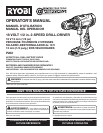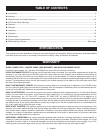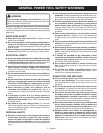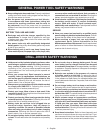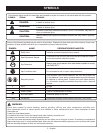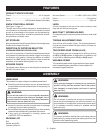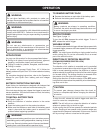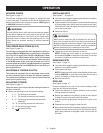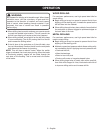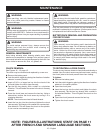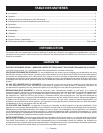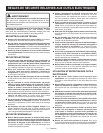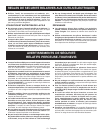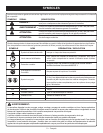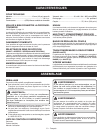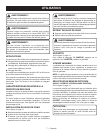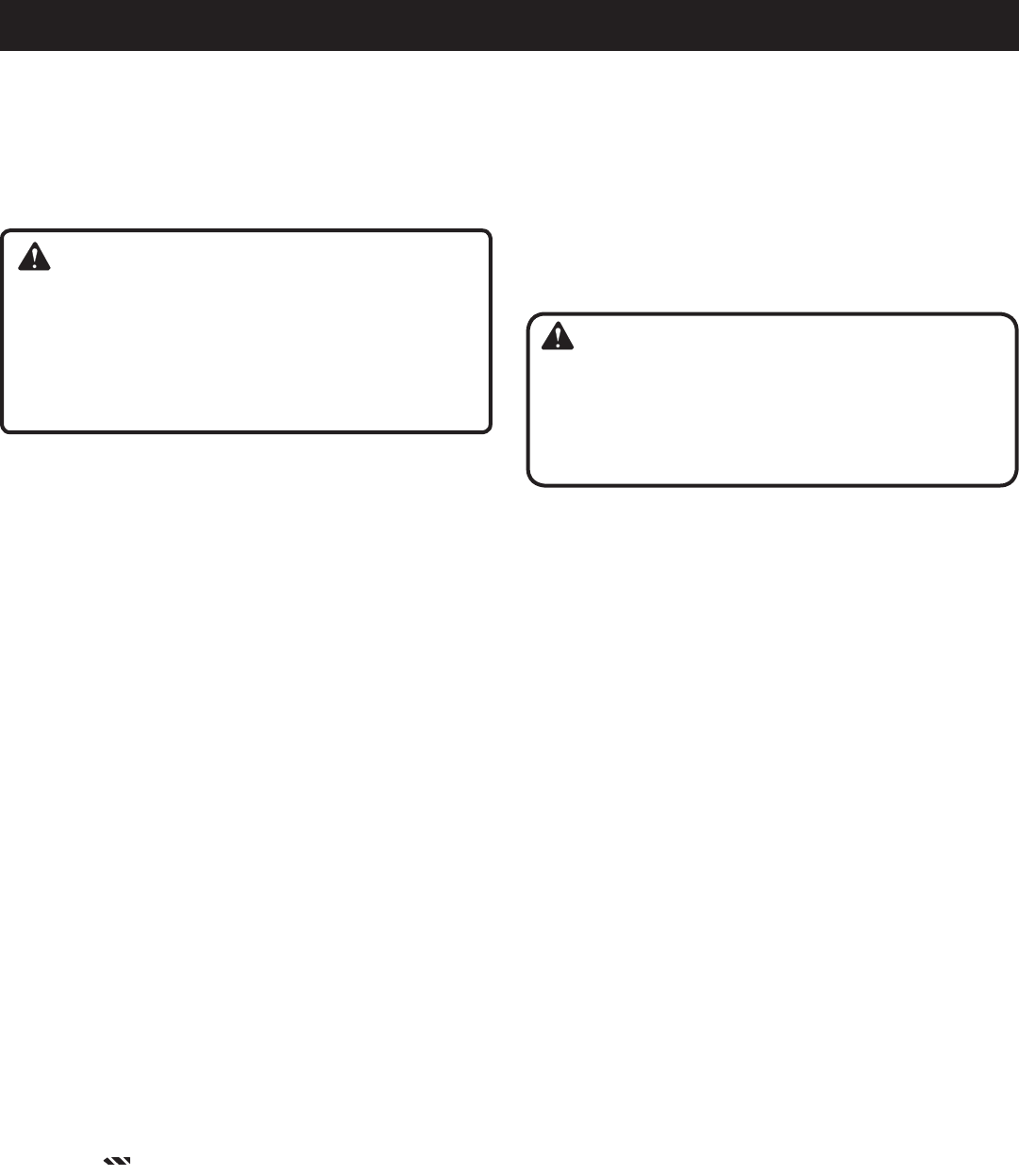
8 – English
OPERATION
KEYLESS CHUCK
See Figure 4, page 11.
The drill has a keyless chuck to tighten or release drill bits
in the chuck jaws. The arrows on the chuck indicate which
direction to rotate the chuck body in order to LOCK (tighten)
or UNLOCK (release) the drill bit.
WARNING:
Do not hold the chuck with one hand and use the power
of the drill to tighten the chuck jaws on the drill bit. The
chuck body could slip in your hand, or your hand could
slip and come in contact with the rotating drill bit. This
could cause an accident resulting in serious personal
injury.
TWO-SPEED GEAR TRAIN (HI-LO)
See Figure 5, page 11.
The drill has a two-speed gear train designed for drilling or
driving at LO (1) or HI (2) speeds. A slide switch is located on
top of the drill to select either LO (1) or HI (2) speed. When
using drill in the LO (1) speed range, speed will decrease
and unit will have more power and torque. When using drill
in the HI (2) speed range, speed will increase and unit will
have less power and torque. Use LO (1) speed for high power
and torque applications and HI (2) speed for fast drilling or
driving applications.
ADJUSTABLE TORQUE CLUTCH
This product is equipped with an adjustable torque clutch
for driving different types of screws into different materials.
The proper setting depends on the type of material and the
size of screw you are using.
ADJUSTING TORQUE
See Figure 6, page 11.
There are twenty-four torque indicator settings located on
the front of the drill.
Rotate the adjusting ring to the desired setting.
• 1-4 Fordrivingsmallscrews
• 5-8 Fordrivingscrewsintosoftmaterial
• 9-12 Fordrivingscrewsintosoftandhard
materials
• 13-16 Fordrivingscrewsintohardwood
• 17-20 Fordrivinglargescrews
• 21- For heavy drilling
INSTALLING BITS
See Figures 7 - 8, page 12.
Lock the switch trigger by placing the direction of rotation
selector in the center position.
Open or close the chuck jaws to a point where the opening
is slightly larger than the bit size you intend to use. Also,
raise the front of the drill slightly to keep the bit from falling
out of the chuck jaws.
Insert the drill bit.
WARNING:
Make sure to insert the drill bit straight into the chuck
jaws. Do not insert the drill bit into the chuck jaws at an
angle then tighten, as shown in figure 9. This could cause
the drill bit to be thrown from the drill, resulting in possible
serious personal injury or damage to the chuck.
Tightenthechuckjawssecurelyonthebit.
NOTE: Rotate the chuck body in the direction of the
arrow marked LOCK to close the chuck jaws. Do not use
a wrench to tighten or loosen the chuck jaws.
REMOVING BITS
See Figure 7, page 12.
Lock the switch trigger by placing the direction of rotation
selector in the center position.
Open the chuck jaws.
NOTE: Rotate the chuck body in the direction of the arrow
marked UNLOCK to open the chuck jaws. Do not use a
wrench to tighten or loosen the chuck jaws.
Remove the drill bit.
DRILLING
See Figure 9, page 12.
A level is located on the top of the motor housing to help
keep the drill bit level during use.
Check the direction of rotation selector for the correct
setting(forwardorreverse).
Secure the material to be drilled in a vise or with clamps
tokeepitfromturningasthedrillbitrotates.
Hold the drill firmly and place the bit at the point to be
drilled.
Depress the switch trigger to start the drill.
Move the drill bit into the workpiece, applying only enough
pressure to keep the bit cutting. Do not force the drill or
apply side pressure to elongate a hole. Let the tool do
the work.



